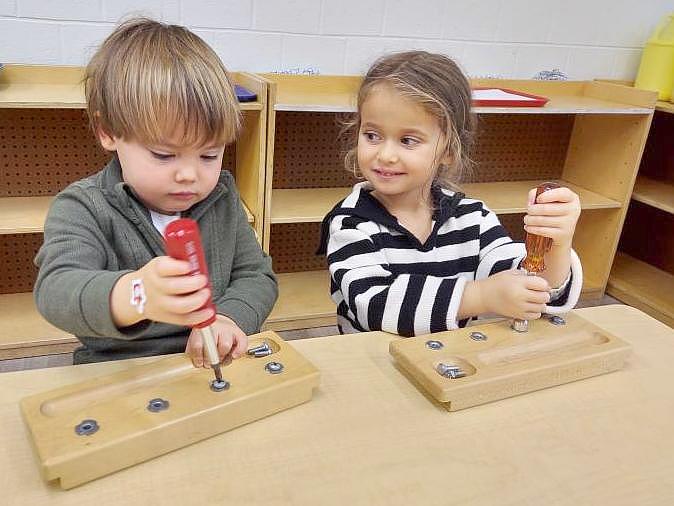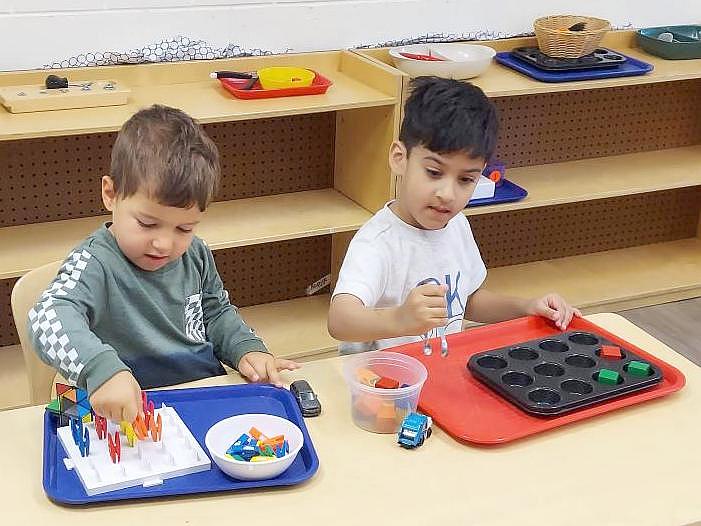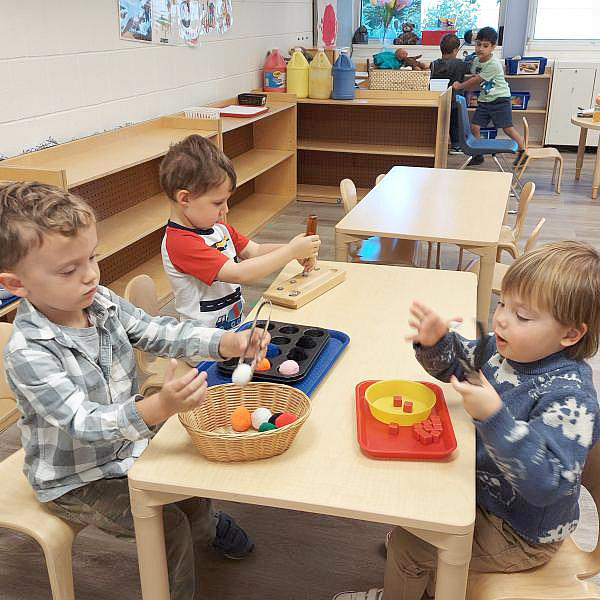


During September, our preschool-3 children have been presented with an assortment of lessons in what is called the “practical life” area of our classroom. The practical life area – also called “everyday living” – provides a program of activities like washing, sweeping, cleaning, serving and the use of simple tools and kitchen implements. These activities are presented by the teacher in carefully planned step-by-step lessons, demonstrated gracefully and slowly in a ritualistic manner with utmost visibility and economy of words. This teaching approach is based on the Montessori Method.
Practical life activities foster independence. Independence requires physical competence, and physical competence comes with practice. The practical life activities are connected to those aspects of life which are repeated over and over every day and are thus ideal for satisfying a child’s desire to repeat the same task. Repetition refines and perfects the child’s motions. The practical life activities allow a child to channel his/her need to act upon his/her environment in a productive program of domestic work. Through practical life activities, the child’s fine and gross motor movements are strengthened, so that he can more readily become the master of his own actions. The preschool-3 children practice dry pouring of rice or sand from one small pitcher to another, then progress to liquid pouring, then to squeezing activities using objects like tongs, chopsticks, pipettes, tweezers, and clamps. Twisting activities like screwdriver boards or matching of assorted lids and containers are popular. In these activities, children’s fingers manipulate small objects in a pincer grasp. Spooning and pouring involve finger and wrist motion. Liquid pouring requires the motions of fingers and wrist with a steady hand. All the practical life activities help to develop good eye-hand coordination.
Practical life materials, though often scaled to a child’s size, are operational and useful. They do not encourage the child to “play house” so much as they help to connect to the actual world of process and results. The child is stimulated to think about, choose, execute, and return the activities to their proper shelves independently, then contemplate what they wish to do next. Process is far more important than product at this stage of risk taking and learning. The very fact that the child should try and keep trying something that is new is an important aspect of practical life learning. The activities in the practical life area are meant to fulfill an inner need to act upon the environment. They nurture the child by providing a chance to develop patience, responsibility and concentration. Children 3 to 6 years old also thrive on order. Order gives the child a sense of security and is very important in the preschool-3 classroom. Practical life activities have a clear order to them – a progression of steps with markers or indicators built into the work to help the child realize the sequence. If the activity is pouring, for example, the pitchers are marked with a water line. When a step in a sequence is forgotten, the end result will reveal a problem. A flashlight will not work unless the batteries are loaded correctly and the cap is fully screwed on. The locks will not open with a wrongly matched key. The practical life exercises are most often self-correcting. The child can discover the problem and the problem offers them a chance to experiment and correct it themselves.
The practical life area prepares children for other areas of the classroom. It teaches children the work cycle – beginning, middle, and finish – and how to clean up and properly put work away. Practical life activities teach children how to handle materials thoughtfully, with focus and care. As stated before, they support the development of independence and a sense of order, and they are an approach to work that can carry over into future important academic activities. Montessori practical life activities help the child to focus upon their daily environment, and practical life activities help them to make sense out of the adult world that they live in.
